Friday, 17 December 2010
Conventions of a title sequence
Monday, 13 December 2010
Brick opening

The title is in a big, bold, white font in the centre of the screen, so it is the audiences main point of focus and it stands out compared to everything else on the page.
Setting/location:
From what we see in the opening sequence the film is set in an urban environment. We see this first through a long/estbablishing shot of our main character standing over the dead body of a girl who we gain an understanding that he was very close to her.
Costumes and props:
All of the characters that we see are all dressed reasonably casually to represent that they live in a suburban area, but this also represents the age of the characters, that they are all quite young. There is a brace;et on the girls arm which we see an extreme close up of when she is dead, but then it cuts to another shot of the bracelets on the girls arm putting a note in someone's locker to help show that it is the same girl.
Interesting camerawork/editing:
I think the close ups of the dead girls different body parts when she is dead, such as, the bracelet on her arm, her hair covering her face and legs was very effective because we gain the understanding straight away that she is dead, but we do not know why or how this has happened.
Title and font style:
The font is in a big, white font contrasting on a black background, like most other thrillers, and is in the centre of the screen so it's the main focus of the audience.
Story:
We see a guy, the main character, staring at the body of a dead girl. We undnerstand that these two used to have something between them as the boy looks really upset looking at her dead body. The viewer wants to find out what has happened to the girl, which means many questions are being asked so it will have intrigued a viewer so they watch the rest of the film to find out what has happened.
Genre:
The genre of the film is clearly thriller because from the very first three shots you see that somebody has been killed but we do not know how of who by, which creates a sense of tension. This works because the audience do not know what has happened so there is also a sense of mystery which works well with the genre of thriller.
How characters are introduced:
The two main characters are first seen with the guy standing by the dead girl but they are introduced with name when they are speaking on the pay phone. This is important because it establishes to the audience who the main characters are and what role they have in this film.
Wallander opening

The title is in a very different format to most others because although the font is big and bold, it is black on a yellow background, unlike most others that have a bold white font contrasting on a black background. The colours of yellow and black could be used to represent the danger in the film.
Setting/location:
The setting/location is first seen through an establising shot, which is seen as a point of view of either a plane or helicopter. It begins by just showing the sea but then pans up to show the land ahead of the plane/helicopter. This is effective because you know they are right by the sea instanly, and you begin to ask questions asking whether the sea will play a later role in the film.
Costumes and props:
We only see costuming of the two girls as they walk away from the cab. One of them is dressed in a very gothic style, with a leather jacket, jeans, and we see is covered in blood holding a knife. The other is also fressed in balck but is just casual, with a jumper. This is effective because the colour black can help represent that the two characters are dark characters.
Interesting camera work/editing:
The piece of editing I thought was the best and most interesting was when we see the girl on the left drop the knife, and the title credits then come in. I thought this was effective because it all seems like one motion in which she drops the knife and the titles come in once she has dropped it. It is clear that the shapes in black on the yellow background is the outline of the knife as it enters from the top of the screen, with the point first, and falls in the shape of a triangle which is used to resemble the knife.
Title and font style:
The title and font style is very basic it is a black font that is reasonably bold, on a contrasting yellow background. This is done to make the font stand out on the page and be the only thing that the audience's attention is on.
Story:
The story is kept very secret to an audience member. All we understand from this opening sequence is that there is a cab driver who has been severely beaten by two girls, and later we see one of them drop a knife which then the viewer immediately understand that this driver has been stabbed during this assult. This does what any successful title sequence does, which is leave the audience asking questions, such as, why have they stabbed him?, what did he do to motivate this?, who are these two girls?, why did they do this?
Genre:
It is clear that it is a thriller because we are kept asking questions as to why this event has happened, but also we have seen that there has been a murder which is iften incorporated in most thrillers. It also leave's questions being asked and having a lot of tension which most thrillers do.
How characters are introduced:
The characters are introduced in a very negative way, the two girls instantly a shown as being very negative, bad characters as they have killed someone and are just walking away casually as if they have done nothing wrong. We are introduced to these characters in a very negative way so we do not really like them but also cannot understand why thye have done this.
Sunday, 12 December 2010
Double Indemnity opening

The title of the film appears in a big, bold, white font with a silhouette in the background. This is so that it stands out on the page and is the viewers main focus point.
Setting/location:
It begins with an establishing shot of a car speeding down a road, showing it is a big city that this film is being set in. To avoid any confusion as to where the film is set there is a film to the left of the picture that says: 'Los Angeles' on it.
Costumes and props:
The costunming that we see from the characters is quite smart. As we see the the main character step out of a car in a big coat, but underneath he is wearing a suit. This shows that he is part of an upper class society in the city, but that his job is very good and he earns a lot of money. We also see the man in the lift in a suit which indicates that the workplace is very big and successful, regarding the time that the film is set.
Interesting camerawork/editing:
The shot that i thought was very effective was where there was the silhouette on crutches coming towards us slowly, and when it eventually reached the front of the screen there was a blackout and the shot faded out into the opening shot. I thought this was effective because it flowed very well and seemed continuous which made it seem very good. I liked this because although it is a very simple transition it is very effective.
Title and font style:
The font in this opening sequence was the sane as the others, in just a large, bold font on a contrasting black background. This is effective because it is seen in every title sequence for a thriller, so an audience may now expect to see this, and it makes the font stand out on the page so it's the audience's main focus point.
Story:
The story is kept very well hidden which keeps the audience in suspense and make them want to keep on watching this film s othey find out what has happened. It basically shows a car speeding down a road which immediately asks questions from an audience perspective because they want to know what has happened and why this car is speeding down the road. We later find out the man in the car works for s big ensurance company and is obviously a big name there as he is recognised straight away. We see a gunshot sound in his shoulder and find out he has killed someone so again questions are raised as to why this has happened and what happened leading up to this.
Genre (thriller):
The film is clearly a thriller because from the beginning there is no explanation to what is heppening and why this is happening. We want to know why he is speeding in his car, why he has a gunshot wound in his shoulder and why he has comitted a murder. There are questions asked and there is a tense atmosphere as we want to know what has happened and why.
How character are introduced:
The main character that we see in the car we do not know anything about them until they step out into the office. We find his name out instantly, Mr. Neff, because he must be big and successful at his work to be known instantly on a namen basis. This created an image in out head that this character is up to something, or has done something, but no-one suspects it because of the image he has already built to other characters in the film.
Thursday, 9 December 2010
6th Sense opening

Kiss Me Deadly opening sequence

Special shots/effects:
Monday, 6 December 2010
Memento opening sequence

Monday, 29 November 2010
Example of the roles in an opening sequence
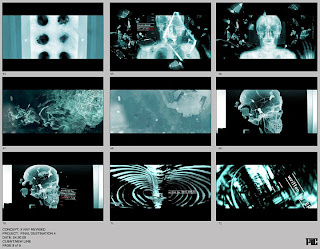
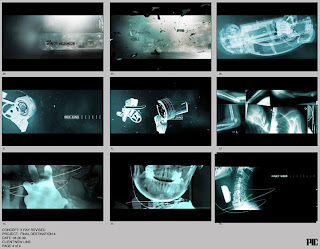
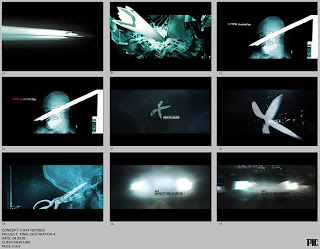
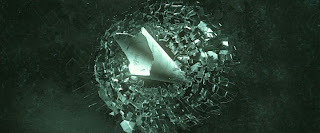
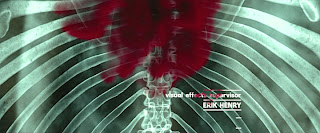
Roles different people have in creating films
Executive producer- Usually reserved for a producer with financial interest it the production.
Casting- The person who decides who they think would fit the role the best and most appropriate out of the auditionees or just well known actors they think would best fit the role.
Costume design- Person that selects what each character should wear corresponding to their personality in the scene and how to add more tension to it via characters clothing.
Music- Person who selects music to be played in scenes that help set the mood of it for an audience to relate to the scene more.
Editing- The person who decides whether or not to add transitions between shots, if there needs to be any special effects involved.
Production designer- Involved in designing how the set should look in the scene and what the lighting hould be like( high/low key).
Director of photograhy- Responsible for framing, camera angles and movement, lighting and the technical requirements to translate a script and storyboard into images on film.
Writer- Person who originally wrote the script or book before it wa put into film form.
Director- Responsible for turning the script into a sequence of shots and what tone the film should have and what an audience should gain from the cinematic experience.
Dexter opening sequence
This is a good opening sequence because it has a twist to it because in the clip it appears that he is is eating his breakfast; but at times it looks quite brutal as if he is killing someone, because on the program he works as a killer so it adds a twist to this opening sequence. However, the one thing that this opening sequence does that not many other do is it does not include any of the people who were involved in the making of the program, for example, the producer or director. This is a good opening sequence because although this seems to be quite a negative program because it has a lot of killings in it the opening sequence gives a diffeent impressionn because it seems quite playful and upbeat with the music in the background and the fact this opening sequence is based around him eating his breakfast.
Superbad opening sequence
I think that this is a good opening sequence because straight away it will catch an audiences attention to the film because it is different to many other opening sequences because they have a coloured silhouette, rather than a black one, which sets the tone that it will be a funny upbeat movie. Also the music used is quite a high tempo which shows at will be a funny movie. They manage to fit in all of the producers and characters names around the silhouette's of the characters dancing which is effective because the audiece will be able to see what is happening in the shot but also it gives the infirmation of who is in the film and what companies were involved in the making of it.
Friday, 26 November 2010
Understanding the purpose of an opening sequence
The purpose of an opening sequence is to let the audience know what is going on within the film and help to set the scene for where it will be set throughout. It also introduces all of the actors that are going to be included in the film throughout, which could be ne of the reasona that many peopole may have paid to go and see that film (because if there are big name actors that they will recognise in it). They also gradually interest the audience in the film because they often begn with something that would shock the audience, and from that point in keep them interested and want to find out what has happened. The choice of font used in a title sequence can help set the genre of the film because, for example, in se7en, in has quite rough words which appear to be handwritten, or look as if they have been, indicating that the film is going to be a thriller becuase the font chosen looks quite mysterious and a bit scary. Most successful opening sequencs give something away in the film that will keep an audinece member guessing throuhghout what has happened and make sure that they are keeping them interested in the film and want to know what has happened.
Understanding the purpose of a trailer.
Thursday, 4 November 2010
The 4 techniques we had to include in the preliminary task
The 180 degree rule is when you have 2 characters in a clip/scene and the camera is always on the same side of the characters throughout it. for example, if one of the characters walks into the room and the camera is filming from their left then from then on in that clip the camera must remain on that characters left; this means that the camera would have to stay on the other characters right for the entire clip. however, this rule can be broken if we see the camera behind one of the characters and we see it cross the line to theo other side of them. This is because the viewer will be able to see that the camera has changed the sides of the characters it is filming on, making sure that it still looks continuous.
Match on action:
Match on action is when we see a character doing something, e.g. opening a door, and as they may go to grab the handle to pull it open the camera would cut with it then in the next shot showing perhaps in a close up of the characters hand pulling the door open. Then it would cut again to a long or mid shot of the character as they are walking through on the other side of the door. This is very effective because it looks good and helps add a variety of shots to a clip. However, if when editing the clip is not cut correctly it would not look continuous as we may see them walk up to the door without reaching for it and then them oopening the door; this would be bad bacause it would not make the piece continuous and would make the clip look bad.
Shot reverse shot:
the shot reverse shot is often used when there are 2 characters involved having a conversation. The camera would probably use a close up for this and all it does is show one character speaking, then cut into the next shot still using a close up, of the other character talking, it would then cut back to the first character who spoke from the same shot. This is usually used to show a characers facial expressions when they are talking so a viewer can probably get a better understanding of how the characters are feeling in the clip.
Eyeline match:
An eyeline match is where one shot may show a character walk into a room, freeze and look down at something. The camera would then cut from that character into a close up of what that character was looking at. The camera then cuts back to the character in the position it cut from them in the first place and the scene would just continue on. However, if again this is not edited correctly and the character is in a different position from what they was in when the camera first cut from them, then again it would not look continuous and would make the scene look wrong.
WWW and EBI of the preliminary task
EBI- In a couple of the shots you are able to hear us say action at the beginning of them, so we probably needed to work on the timing of all of the cuts of our clips when editing so you are not able to hear us say action.
Tuesday, 2 November 2010
Preliminary task
Sunday, 31 October 2010
Continuity editing techniques
An example of match on action would be; someone is reaching to open a door, then they may freeze mid-way through the process of opening it. The camera would pause and then cut to a close up of the persons hand about to open the door, then it continues with them opening the door. After this they may freeze after pulling the door open and the camera zooms out again and shows them walking through the door in what could be a possible long or mid-shot. The only problem with match on action is when editing it is difficult to make it so it all appears to flow as if it has not been paused and re-done several times.
Eyeline match:
An eyeline match is where the camera would show a close-up of a persons face with them looking in a certain direction. The camera would then cut to an image of an object to show the audience/viewer what the person was looking at. The camera would then cut back to the persons face after showing what they were looking out to then show the reaction of that character.
180 degree rule:
The 180 degree rule is very basic. It is just to ensure that the clip looks correct and makes everything look where it is supposed to be. For example, if the camera at the start of the clip was on the left hand side of a character then it would have to remain on that side of the character for the rest of that clip or it would not look continuous and would make it difficult for an audience member to follow the clip as everything would then seem to be out of place.
Master shot:
A master shot is basically the same as a long or establishing shot. The main purpose of this shot is to give the audience a clear view of the setting, and that this is the place that the majority of this clip is going to be in.
Shot reverse shot:
Shot reverse shot mainly happens when there is dialogue in a clip between two characters. When one character speaks the camera will focus mainly on them, and then when they have finished what they are saying the camera will cut from them to the other to show what they are saying. Again when they have finished the bit of dialogue they have it will again cut back to the other character to sho what they are saying. This is good because it also enables the audience to see the facial expressions of the characters while thay are talking and get an understanding of how the characters are feeling in that situation.
WWW and EBI of 'Preliminary task'.
EBI- It would have been better if we didn't have to start the whole task again, and change the story we wanted to put behind it, because it made it look slightly scrappy and in places the editing is a bit off because we had to rush through it to get the task done.
Tuesday, 19 October 2010
induction WWW and EBI
EBI- I anaylsed all of my work in a lot more detail because a lot of it was quite brief and not very detailed.

